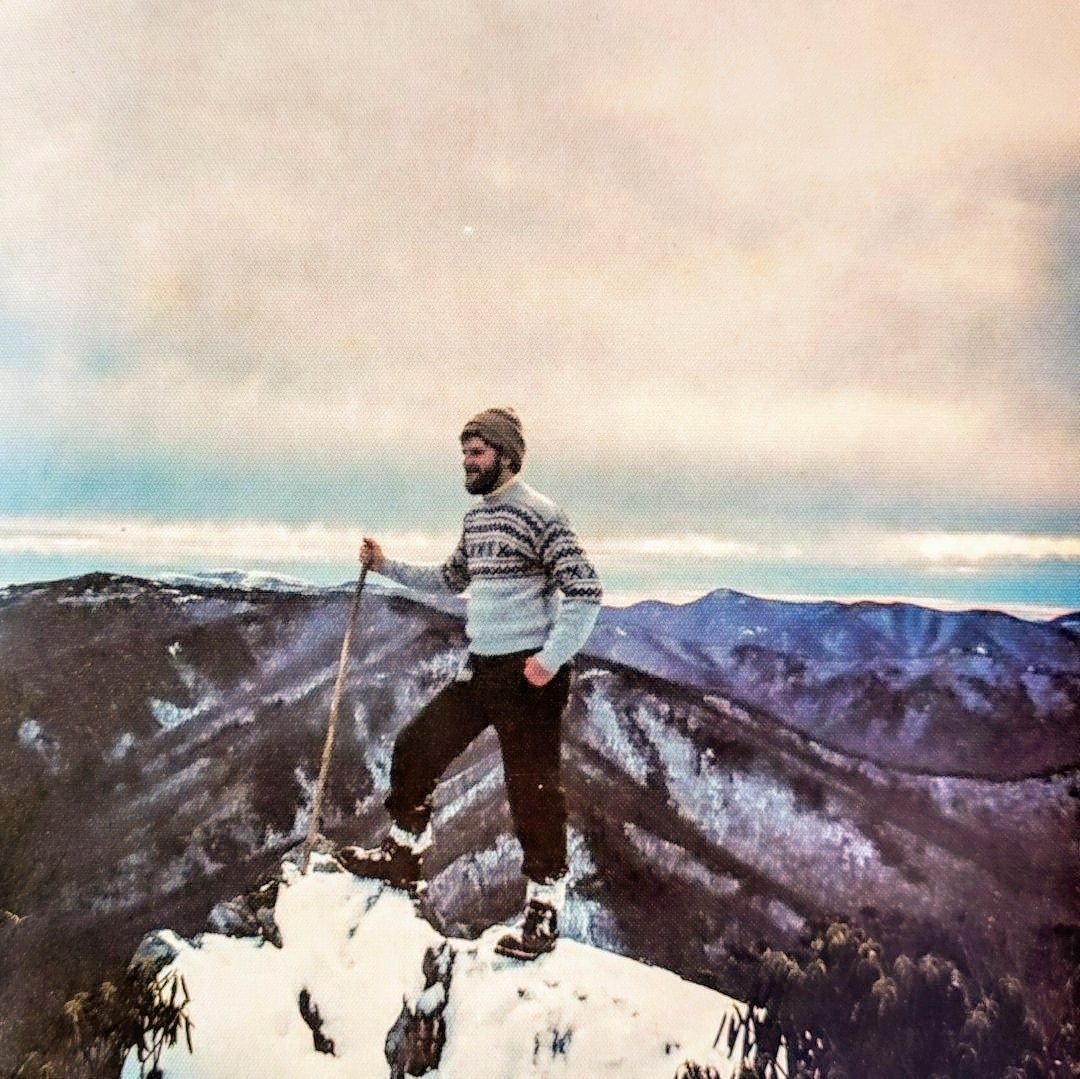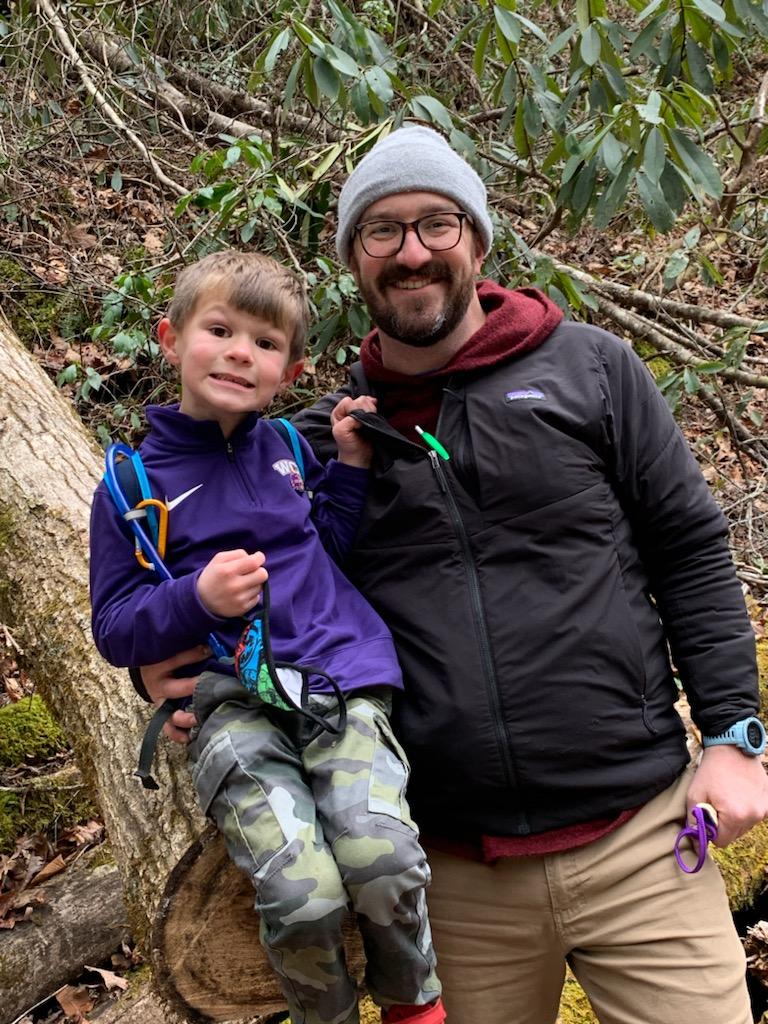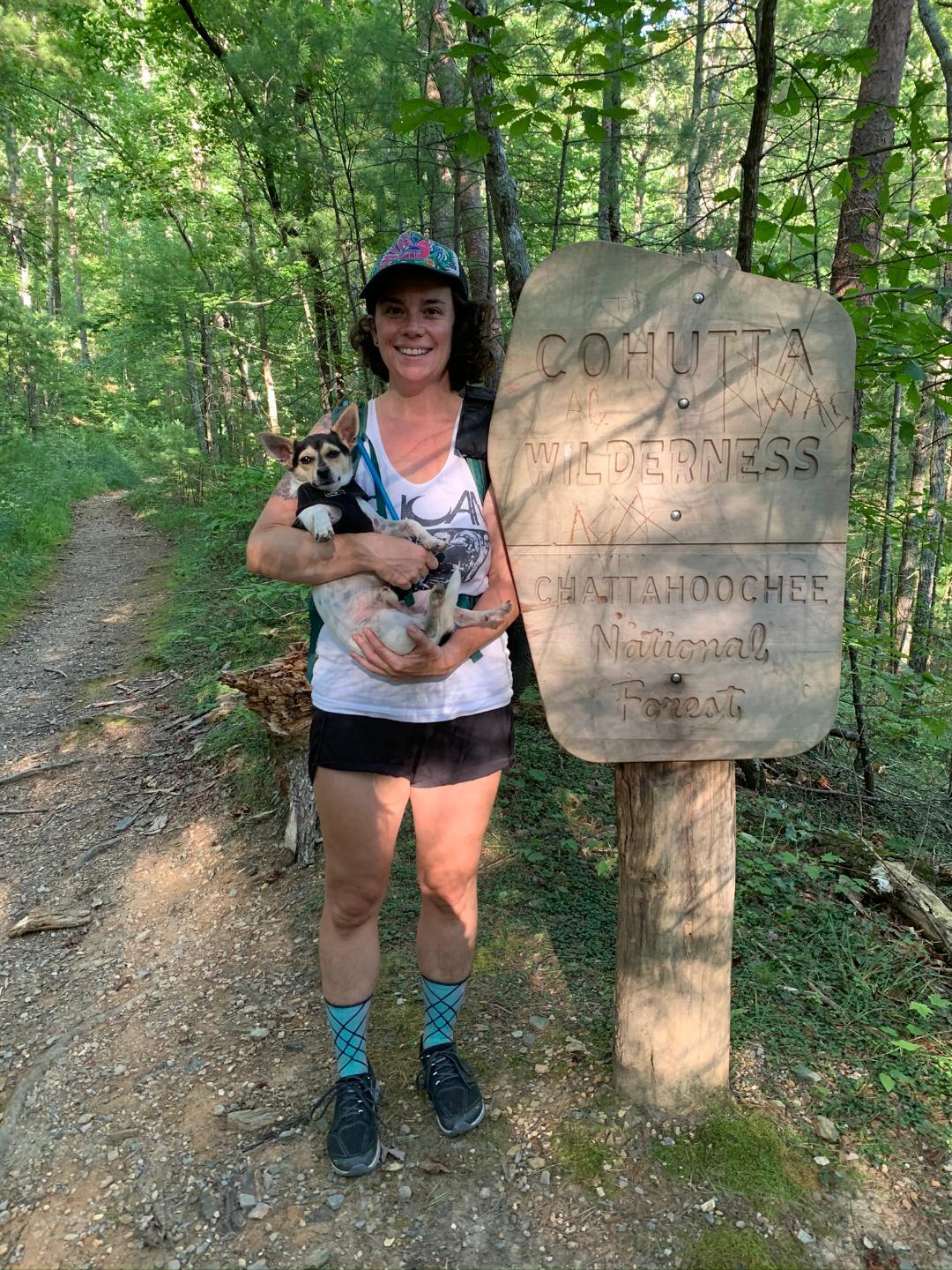By Mark Ellison
The Pathway from Recreation to Conservation
September 10, 2021
Do you remember the first time you set foot on the Appalachian Trail (A.T.)? For me, it was Charlies Bunion in the early 1990s. I don’t remember much else about the day, just that it was incredibly beautiful and unlike anything I had experienced. I left with a sense of awe, wanting to spend more time on the A.T., to develop a deeper connection with the natural environment – soaking in its beauty, solitude and quiet, as well as the physical and mental challenges the Trail offers.
In the thirty years since that hike to Charlies Bunion, my relationship to the A.T. has evolved from simply hiking it to developing a conservation ethic as a central part of my identity. This identity is expressed through writing about the importance of forests, research on hiking in wilderness for my doctorate, creating and teaching a college course on nature and human health, leading hikes for Trail Clubs, making presentations for organizations and groups on the importance of nature, and working as a forest therapy guide.
My journey is one among many. As we look to the overall community of people who have a relationship to the Trail, we can ask: What motivates some people to make the transition from hiking the A.T. to becoming actively involved in its protection?
Perhaps it is memories of good times shared with friends and family backpacking in Great Smoky Mountains National Park? Or awe-inspiring views at McAfee Knob or Mt. Killington? Maybe it’s the Trail’s biodiversity, equaled by few places in the world? Or, perhaps, it is looking deep into the night sky and finding inspiration? It could also be the realization there are a multitude of threats to the well-being of the lands and natural resources the A.T. traverses, including climate change, development, pipelines, logging, biodiversity loss, habitat destruction, invasive species, overexploitation, and pollution.
Maybe we develop, over time, an ethos: understanding that we need nature and nature needs us.
Being a conservationist can be as simple as following Leave No Trace principles when hiking. From carrying out what we bring in, leaving what we find, and helping maintain a quiet environment for others to enjoy the tranquility of the forest. Through our actions, we can help conserve a precious natural resource and inspire others to do the same.

Ed Kelley, hiking back in the 1970s.
Or, conservation can be an approach to life. Ed Kelley, 66, was inspired by a college biology instructor to learn more about nature and enjoys sharing what he has learned over the years through photography and impromptu plant identification lessons along the Trail. It is his way of protecting the mountains his family has called home for generations while helping others embrace the magnificent beauty with a gentle touch.
Conservation and care for the Trail can also be expressed through stewardship on the ground. Volunteers built the A.T. and continue to manage it nearly a century later. Over 6,000 volunteers each year invest their time and energy to keep the A.T. traversable.

Joe Morris
Joe Morris, 58, has been a Trail maintainer since 2012, volunteering with the Tennessee Eastman Hiking and Canoeing Club (TEHCC) trail crew in northeast Tennessee. Joe describes his motivation saying, “creating a safer treadway for hikers to enjoy is a priority for me as I volunteer for Trail maintenance. Since the pandemic began, we are seeing two or three times the number of people seeking outdoor recreation.”

Ben Pendry with son Branch
For some, giving financially to support conservation efforts helps fuel progress. Ben Pendry, 37, an A.T. section hiker who first started donating to the ATC in high school, gives “specifically because of the Appalachian Trail Conservancy’s (ATC) conservation and advocacy efforts. Who else will speak up for the Trail? Who else will act in the Trails’ best interests? If we believe in public land, we, the public, must show up and speak up. We must do that through financial support and through the ballot.”
For others, the seeds of a conservation ethic are planted early and eventually become a lifelong calling for a career. Will Moss, 21, a senior at North Carolina State University studying forest management and wildlife sciences, started hiking and camping with his father when he was six years old.

Will Moss at the Schenck Forest at North Carolina State University
Those experiences helped him develop a love of the outdoors and learn how he could make a difference in the world. “Conserving forests and natural resources had an immense impact on my decision to study forestry. By pursuing a career in forestry, I can do my part to conserve our abundant forest land for future generations to enjoy.”
The A.T. is, in essence, about building a community of people who appreciate nature. Kentucky Costellow is the Social Media Coordinator for Wild East Women, a group helping to build a community of women-identifying stewards and users of the A.T. and other wild spaces. “I am inspired to do this work because I firmly believe that if people have good experiences outdoors, they will want to protect it.” Kentucky also works as an outfitter for REI and produces a podcast called Outside with Pride Storytelling Project to collect the stories of LGBTQ+ REI employees.

Kentucky Costellow
We cradle the A.T. in our minds, hearts, and spirit because it offers access to an Appalachian wilderness — home to curious bears, soaring hawks, and a multitude of native plants — that can compel us to be better stewards of nature. Each of us has unique talents and skills that we can use to help protect the A.T., whether it’s telling stories or sinking our fingers into the dirt. We want to always be able to bask in the crisp balsam-scented air and frolic in the refuge of the mountains with the trilliums, sycamores, and river rocks. Many of us find who we are on the Trail, holding tightly to the power of its place in our lives and wanting others to have similar experiences. For many of us, our evolution from hikers to stewards of the A.T. and its resources helps us accomplish that goal.
So take a moment to reflect on your last A.T. hike and how that experience aligns with the stewardship. How can your next hike bring you closer to becoming actively involved in protecting the Trail? What gifts do you have to offer? Together, our combined efforts can help ensure the A.T. experience we treasure is available for future generations.
 Mark Ellison began exploring the trails of the southern Appalachian Mountains as an undergraduate at Western Carolina University. The beauty and solitude he found there inspired him to focus his doctoral research at NC State on the restorative benefits of hiking in wilderness. Living in Cullowhee, NC, he helps others learn about and experience the restorative power of nature as a certified forest therapy guide, writer, photographer and speaker. Learn more.
Mark Ellison began exploring the trails of the southern Appalachian Mountains as an undergraduate at Western Carolina University. The beauty and solitude he found there inspired him to focus his doctoral research at NC State on the restorative benefits of hiking in wilderness. Living in Cullowhee, NC, he helps others learn about and experience the restorative power of nature as a certified forest therapy guide, writer, photographer and speaker. Learn more.





